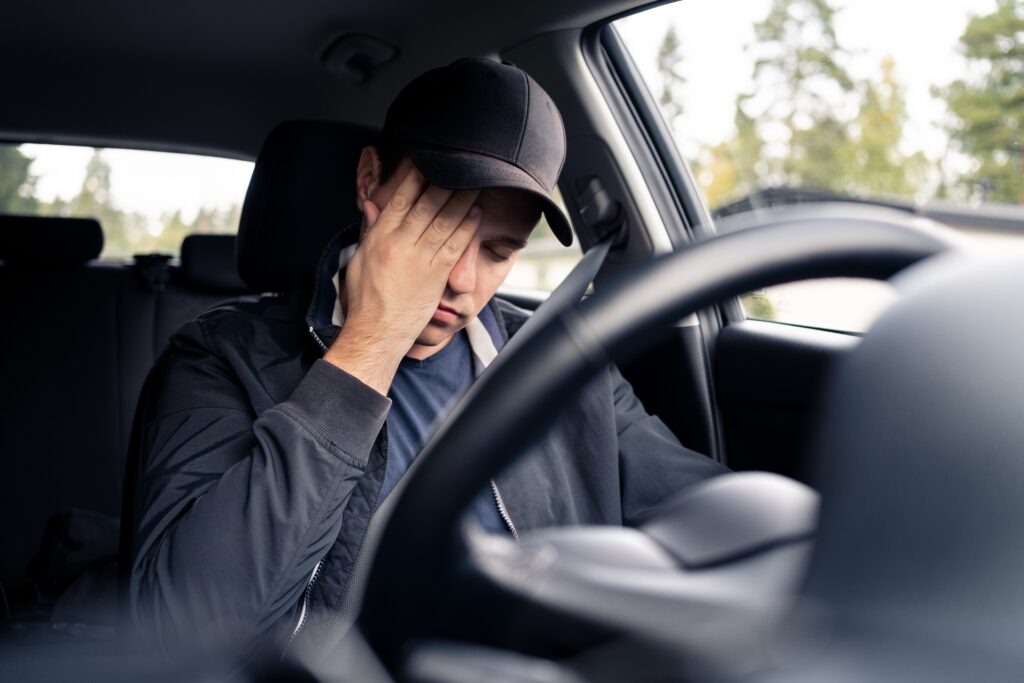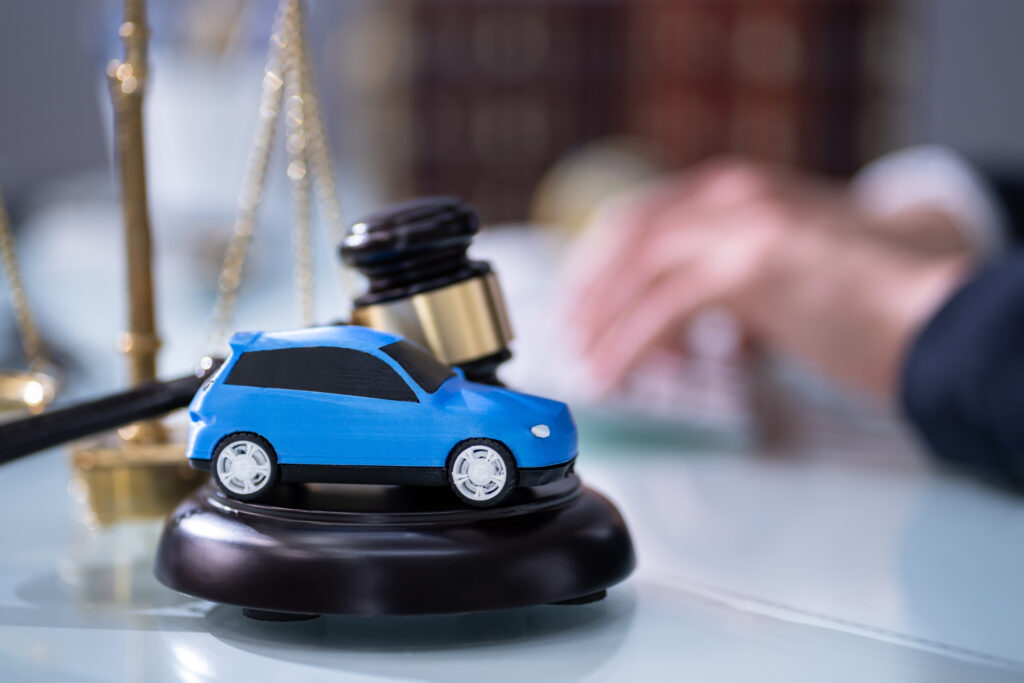Car driver fatigue occurs when a driver is overly tired or drowsy, impairing their ability to focus, react quickly, or make good decisions while driving. Fatigued drivers often struggle to stay awake, causing them to fall asleep at the wheel or lose attention, which can lead to dangerous accidents. Common consequences of fatigued driving include rear-end collisions, lane departures, and single-vehicle accidents.
If you’ve suffered an injury in a crash that a fatigued driver caused, an experienced Calgary car accident lawyer can file a personal injury claim or lawsuit on your behalf to seek compensation. They will investigate your accident, gather evidence, negotiate with insurance companies, and fight for the fair compensation you deserve for your lost income, pain, and suffering.
Types of Accidents that Fatigued Drivers May Cause

Fatigued driving is a serious risk on the road, and it often leads to accidents that may have been avoided with proper rest. When a driver is fatigued, their reaction time is slower, their attention span is reduced, and their ability to make decisions becomes impaired. This can result in several types of accidents, the most common of which are rear-end collisions, lane departure crashes, and single-vehicle accidents.
One of the most frequent accidents resulting from driver fatigue is rear-end collisions. When a driver is tired, their ability to maintain focus on the road decreases, leading them to miss important visual cues, such as the brake lights of a vehicle ahead. As a result, the fatigued driver may not notice a slowing or stopped car in time to react appropriately, causing a rear-end crash. This type of accident is especially dangerous in heavy traffic or on highways where vehicles are moving at high speeds.
Lane departure accidents are another common consequence of drowsy driving. When a driver is fatigued, their attention may wander, making it harder to stay within lane boundaries. This can lead to the vehicle drifting into an adjacent lane, causing a side-swipe collision with another vehicle, or even veering off the road entirely, which may result in the driver losing control of the car. These types of accidents are particularly dangerous when they happen on highways or roads with high-speed limits.
Single-vehicle accidents also occur frequently when a driver is too tired. In these cases, the driver may fall asleep at the wheel or become so drowsy that they lose control of the vehicle. The car may also veer off the road, hitting a tree, a guardrail, or a barrier. These accidents are often more severe because the vehicle doesn’t have another car to absorb some of the impact. Furthermore, single-vehicle accidents may go unnoticed for a longer time, increasing the likelihood of serious injuries or fatalities for vehicle passengers.
In addition to these common types of car accidents, fatigued driving can also lead to decision-making errors, such as misjudging speeds or distances, which can result in dangerous situations.
Injuries in Accidents that Fatigued Motorists Cause
Victims of fatigue-related driving accidents can suffer a range of injuries, both physical and mental. These injuries may vary in severity, from minor bruises to life-altering conditions, depending on the circumstances of the crash. In addition to the physical harm, fatigue-related accidents can also lead to significant emotional and psychological effects.
Physically, one of the most common injuries in fatigue-related crashes is whiplash. This occurs when the neck and head are abruptly jolted forward and backward during a collision. The impact stretches and strains the muscles and ligaments in the victim’s neck, leading to stiffness, pain, and limited mobility. Whiplash can be a painful condition that requires physical therapy and can sometimes result in chronic discomfort.
Another frequent injury in these types of accidents is a traumatic brain injury (TBI). This can occur when the victim’s head strikes the window, dashboard, or steering wheel during a crash. TBIs can range from concussions to more severe brain damage, affecting a person’s ability to think, move, or speak properly. In the worst cases, a TBI can result in permanent disabilities or even death.
Broken bones and fractures are also common in fatigue-related crashes – especially in high-speed collisions. The force of the impact can cause limbs to break, leading to pain, swelling, and the need for surgery or long-term rehabilitation. Commonly fractured bones in car accidents include the arms, legs, ribs, and collarbones.
In addition to physical injuries, fatigue-related accidents can cause emotional and psychological trauma. Many victims experience post-traumatic stress disorder (PTSD) – a condition that can occur after a life-threatening event. PTSD can lead to anxiety, depression, flashbacks, nightmares, and difficulty functioning in everyday life. The emotional scars from the trauma of an accident can last long after physical injuries have healed.
Another mental health issue that victims may face is depression. The recovery process – especially if it involves long-term physical therapy or loss of mobility – can lead to feelings of hopelessness and sadness. Victims may struggle with adjusting to new limitations, losing their independence, or dealing with financial strain due to missed work time.
Settlement Process in a Fatigued Driving Car Accident Case
The settlement process in a fatigued driving car accident case can be complicated and time-consuming, but having a skilled car accident lawyer by your side can make all the difference. After the accident, once medical treatment has been addressed, the focus shifts to handling the legal and financial aspects of the case. A lawyer experienced in fatigued driving accidents will work to ensure that you are fairly compensated for your injuries, damages, and losses.
- One of the first tasks a lawyer will take on is investigating the circumstances of the accident. In a fatigued driving case, proving that the other driver was drowsy or asleep at the wheel can be challenging. Your lawyer will gather evidence, such as police reports, witness statements, and any available video footage. They may also look into the driver’s history, including any previous traffic violations or signs of drowsiness before the crash. This evidence will help to establish that the driver’s fatigue caused the accident and your injuries.
- Once the investigation is complete, your lawyer will work with medical professionals to assess the full extent of your injuries. They will also consider other factors, such as lost income if you’re unable to work and the effects on your quality of life. All of this will be used to calculate a fair settlement amount.
- Negotiating with insurance companies is often one of the most challenging parts of the settlement process. Insurance companies may try to minimize payouts or deny responsibility for the accident. A skilled car accident lawyer is well-versed in dealing with these tactics and will advocate on your behalf to ensure you receive the compensation you deserve. They will handle all communications with the insurance company, ensuring that you don’t make any statements that may negatively affect your case.
- If a fair settlement cannot be reached through negotiations, your lawyer may take your case to court. While most cases are settled out of court, having a lawyer who is ready to go to trial if necessary can strengthen your position during negotiations. Throughout the entire process, a skilled lawyer will guide you, allowing you to focus on your recovery while they handle the legal complexities.
Litigating a Car Accident Case Resulting from Fatigued Driving

In a fatigued-driving car accident case, litigation begins when the victim files a lawsuit in the court system. After attempts at settlement have failed or negotiations with the insurance company have reached an impasse, the victim may need to take legal action to seek compensation. The lawsuit is typically filed in a civil court, and the victim (the plaintiff) sues the driver responsible for the accident (the defendant) for damages resulting from the crash, including lost income, pain, suffering, and emotional distress.
Once the lawsuit is filed, both sides enter the discovery phase. Discovery is the process through which each party gathers evidence and information to build their case. The plaintiff’s lawyer will request documents, such as police reports, medical records, and any evidence that proves the defendant was fatigued or negligent at the time of the accident. The defendant’s lawyer will also gather evidence to defend their client, which may include statements or evidence suggesting that fatigue wasn’t a factor. Both parties may also conduct depositions, where witnesses, the defendant and the plaintiff, provide sworn testimony.
During discovery, both sides may file motions with the court to resolve certain issues before trial. For example, a motion for summary judgment can be filed if one side believes there is enough evidence to rule in their favour without a full trial.
As the trial date approaches, both sides will prepare their arguments. This includes gathering expert witnesses who can testify about the effects of fatigue on driving, the severity of the victim’s injuries, or other relevant matters. Both the plaintiff’s and defendant’s lawyers will also prepare opening statements, closing arguments, and witness lists.
If a trial takes place, the case will be heard before a judge or jury, who will determine whether the defendant is liable for the victim’s injuries. The trial involves presenting evidence, questioning witnesses, and making legal arguments. After both sides present their cases, the judge or jury will deliberate and reach a verdict.
In some cases, before the trial begins or during the trial, alternative dispute resolution (ADR) methods such as mediation or arbitration may be used. These methods involve a neutral third party helping both sides reach a settlement without going to trial. However, if the case is not resolved through ADR, the trial will proceed.
Compensation for Injuries in a Car Crash that a Fatigued Driver Caused
In a case of fatigued driving car accident, victims can pursue compensation for the various losses reasons. Compensation for these losses are designed to help victims recover from the emotional, physical, and financial hardships resulting from the accident. The most important compensable losses a victim can recover include lost income, pain and suffering, emotional distress, and loss of consortium.
One of the most common losses is lost income. If a victim is unable to work due to injuries sustained in a fatigued driving accident, they can recover the income they would have earned during their time off. This includes not only earnings for missed workdays but also potential future earnings if the injuries result in long-term disability or the inability to return to the same job. A skilled lawyer can calculate lost income by reviewing the victim’s employment records, salary, and duration of their recovery.
Pain and suffering is another significant compensable damage. This refers to the physical pain and discomfort the victim endures as a result of the accident and their injuries. Unlike economic damages, which are based on actual costs, pain and suffering is more subjective and varies depending on the severity of the injuries. Compensation for pain and suffering can cover both the short-term pain experienced immediately after the accident as well as the long-term physical pain that may last for months or years. The amount of compensation usually depends on the severity of the injuries, the effects on the victim’s daily life, and the duration of recovery.
Emotional distress is a compensable damage that addresses the psychological effect of the accident. Victims may experience anxiety, depression, fear, and even post-traumatic stress disorder (PTSD) as a result of the crash. These emotional effects can be just as debilitating as physical injuries.
Lastly, loss of consortium refers to the loss of companionship, affection, and support that a victim’s spouse may experience due to the injuries. If the victim’s ability to maintain their relationship is significantly affected due to their injuries, the spouse may be entitled to compensation for the emotional and personal losses they’ve suffered.
Together, the compensation for these damages aims to provide a fair recovery for the victim’s overall suffering, ensuring that they are financially supported and emotionally restored after a fatigued driving accident.
Talk with an Experienced Car Accident Lawyer Today

If you recently suffered injuries in a car crash that a fatigued driver caused, a skilled Calgary personal injury lawyer can be extremely helpful throughout the process. Your lawyer will swiftly investigate your accident circumstances, obtain a copy of the police report and other documentation, and pursue the settlement or litigation compensation you need.
